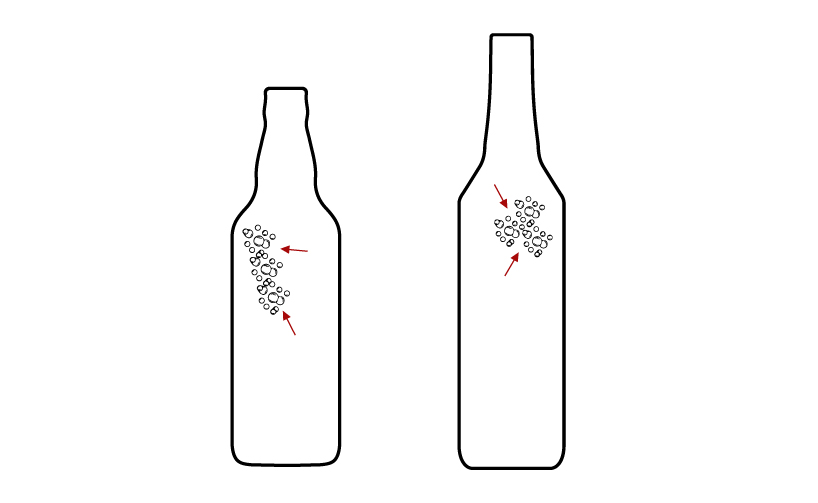Industrial Defect Classification Terminology
An open fissure on the surface of the bottle.
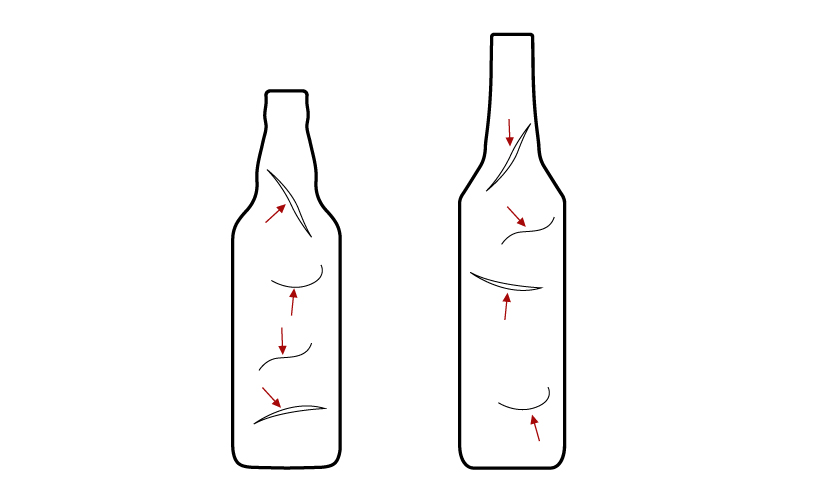

Foreign particle embedded in the glass wall. May cause local strain which could result in cracks and breakage.
Small light brown or white inclusion within the glass wall. >1.6mm in diameter.

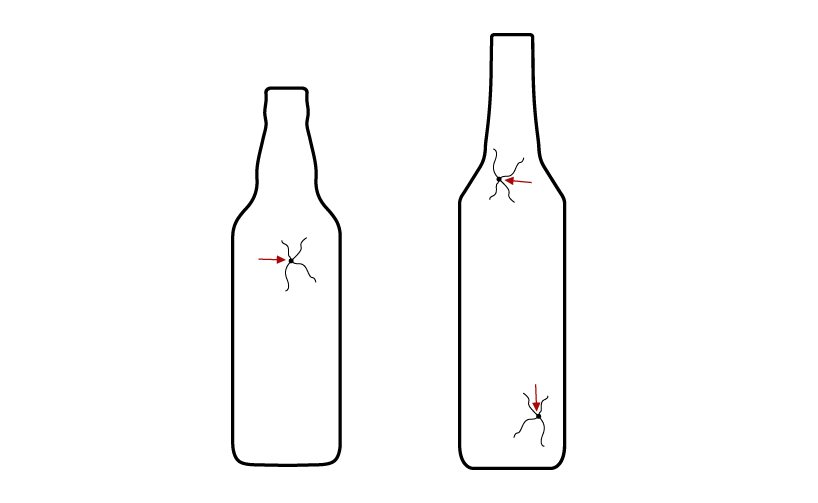
A blister next to the internal surface of the glass or black bubble inside the glass material which is already burst or can be easily broken.
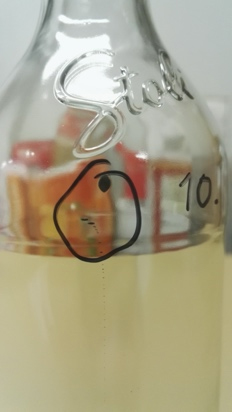
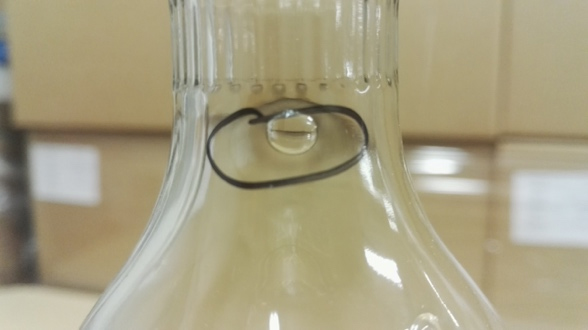
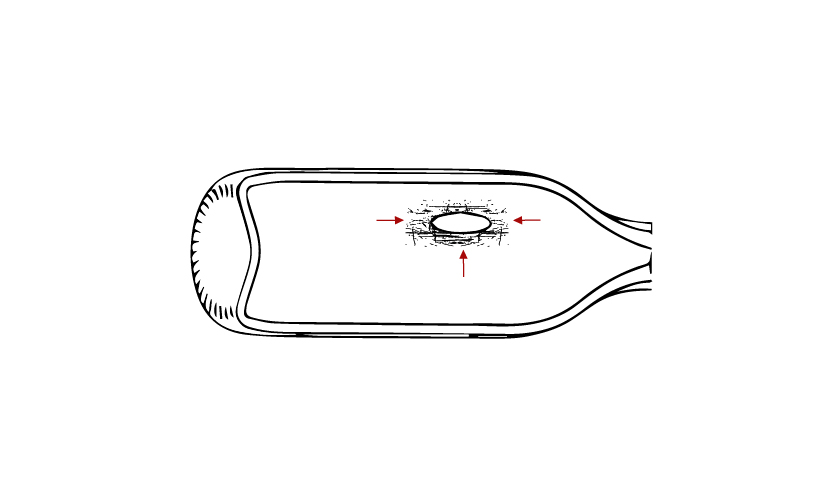
C-shape mark in the glass, attributable to the action of shears. Or Gob mark Defect on the surface of the glass packaging in the form of an imprint formed a result of contact of the molten glass with scissors. It is localized mainly at the bottom or at the shoulder of the product. This mark look like a scar or eye lash.
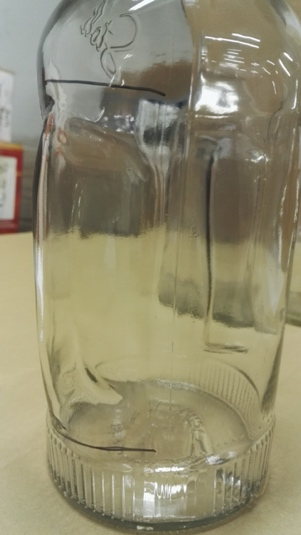
The neck of the bottle has been mechanically deformed by squeezing.
The neck of the container is bet away from the centre axis of the body.
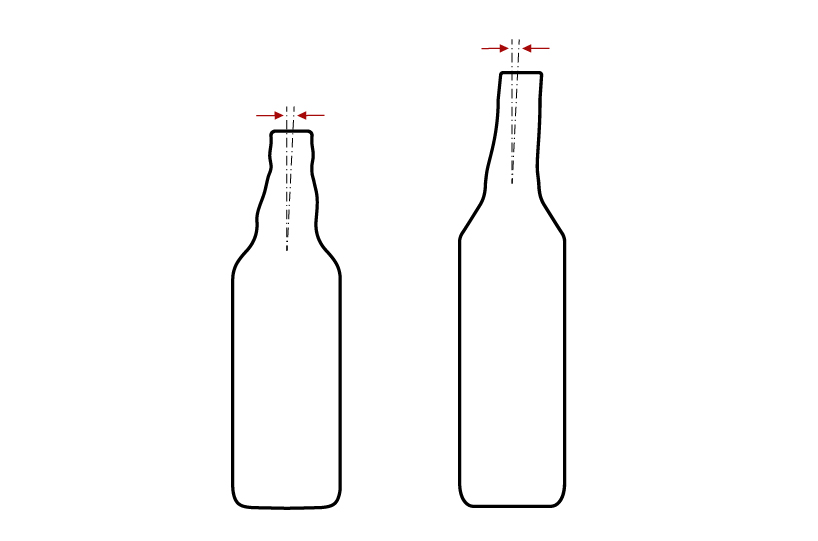
A container which badly formed or squeezed out of shape that it can be seen at almost any distance

The wall of a container (usually panel shape) that is not fully blown to vertical (concave), the container is “misshaped”.
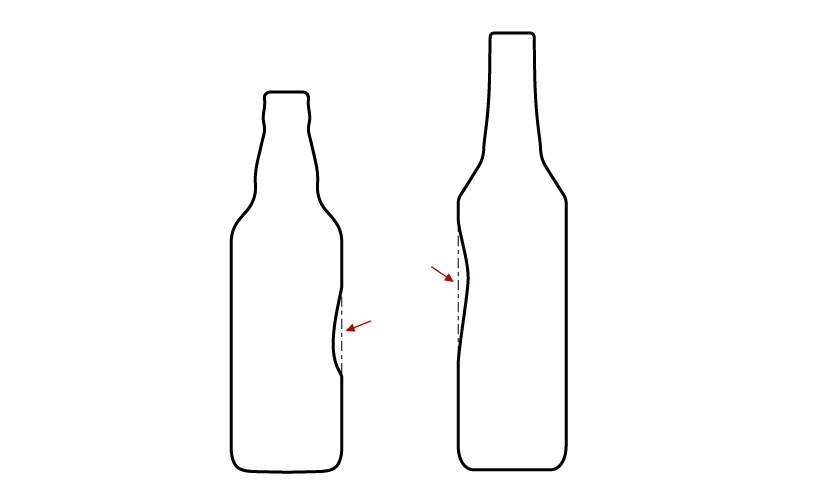
The sides of a container (usually panel shape) are pushed out. Convex distortion of the cylinder on round containers and on panels on none round containers (blown out past vertical).
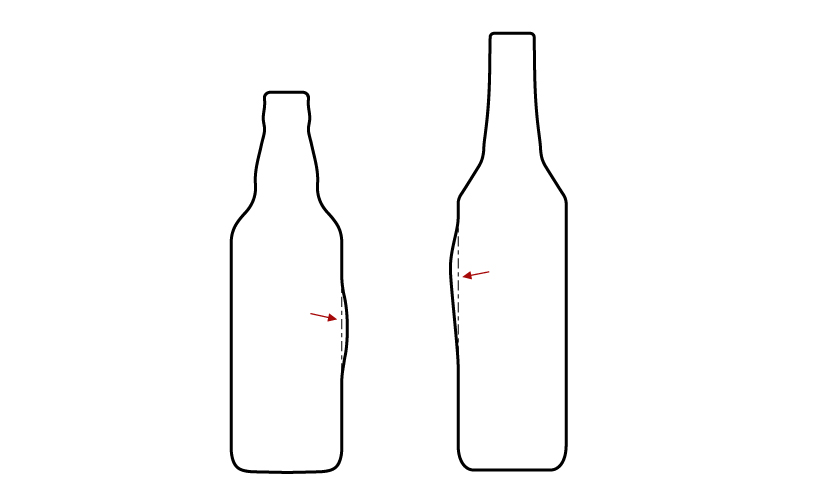
A fracture (reflective to light) that will result in a crack penetrating from the outside to the inside of the bottle.

A protrusion (needle like projection of glass) pointing away from the inner glass surface (sidewall), not necessarily sharp. Most often near the center of the base or some where on the base

Insect inside the bottle. Bottle containing any foreign substance other than glass likely to contaminate the product
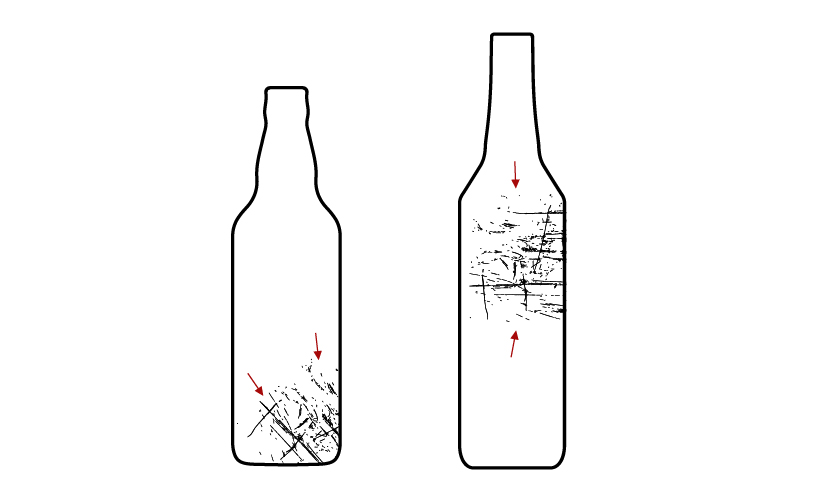
A bottle ,where the surface has been abraded around the perimeter through contact in processing. Roughness of surface with chips and entire roughness on circumference of the body. A defect on any part of the surface of the glass packaging in the type of damage that creates the effect of a matte surface, of various shapes and sizes obtained when products come into contact with each other or with other hard objects.
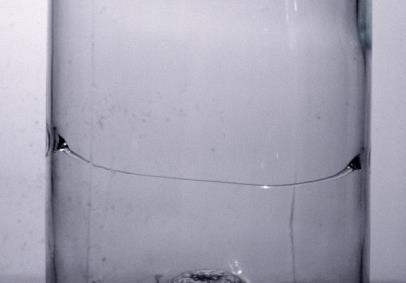
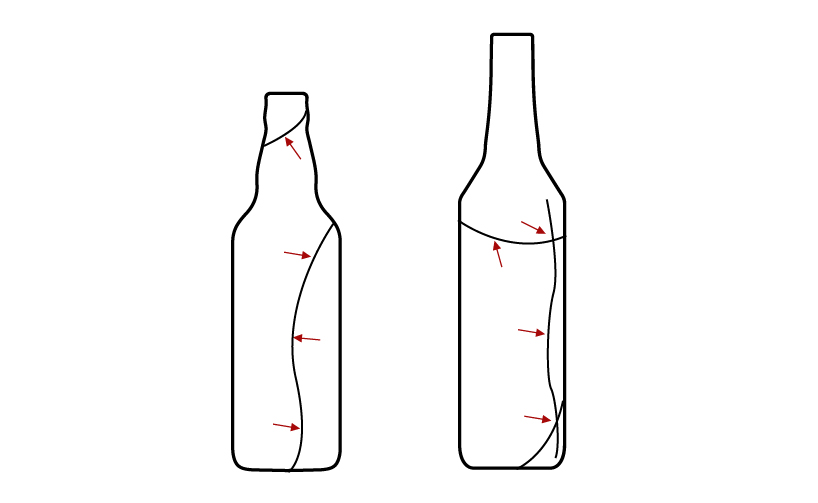
A finish manufactured during the Narrow Neck Press Blow (NNPB) and Press and Blow processes, which has excessive glass protruding upward from the inside mould parting line, to the extent it may be broken or chipped in normal use
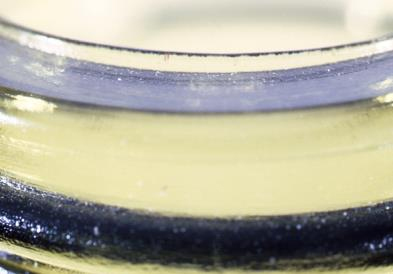
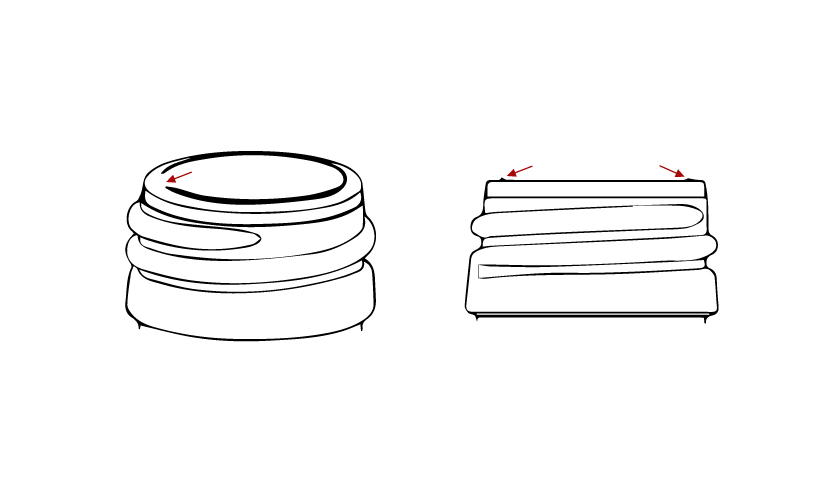
Very fine fins of glass at the bore entry (Sugary top) or extending down into interior surface at the bore (Sugary bore).
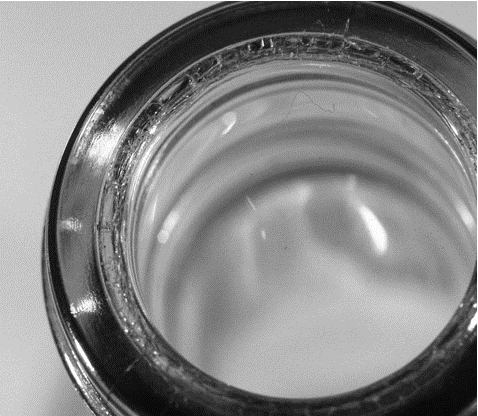
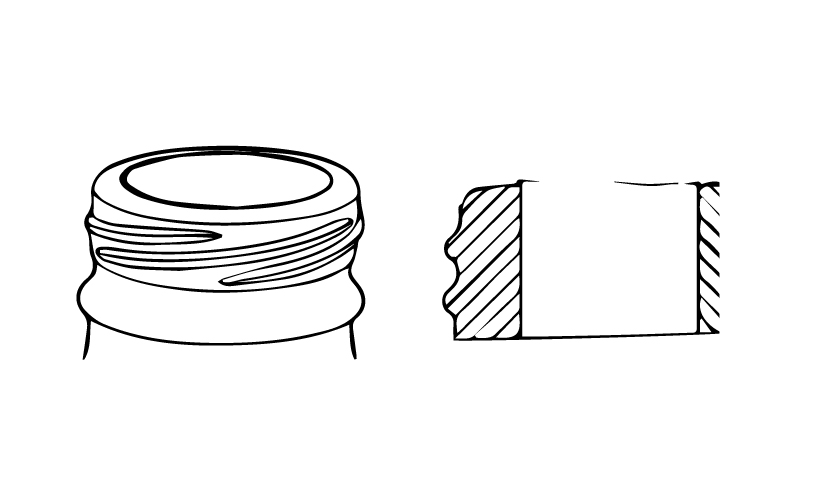
A small fragment of glass on the sealing surface that has broken away without causing the finish to break but leaving a sharp edge.
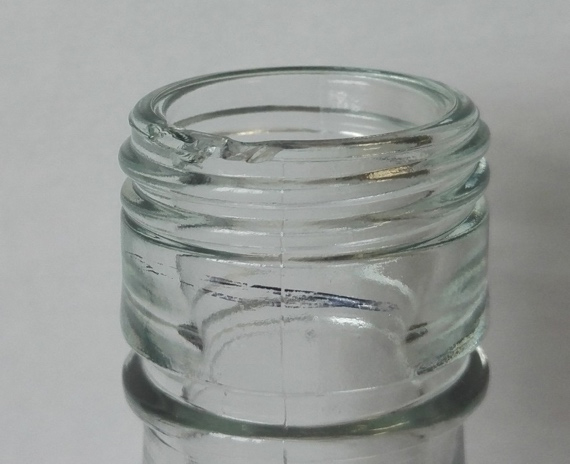

Severe restriction of through bore such as to prevent clean entry of a straight filling tube properly adjusted and compatible with the container normal bore value which could result in chipped glass in the bottle.
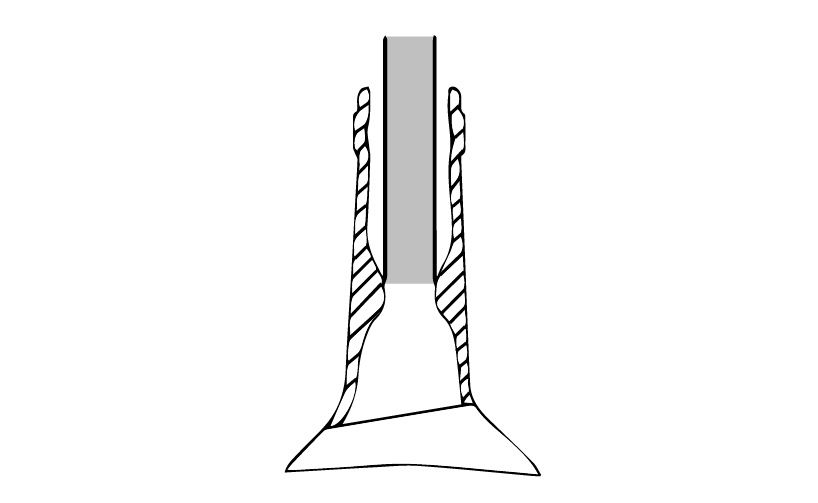
A vertical split deeply penetrating the glass, running down from the sealing surface.
A vertical split penetrating the glass in the vicinity of the sealing surface.
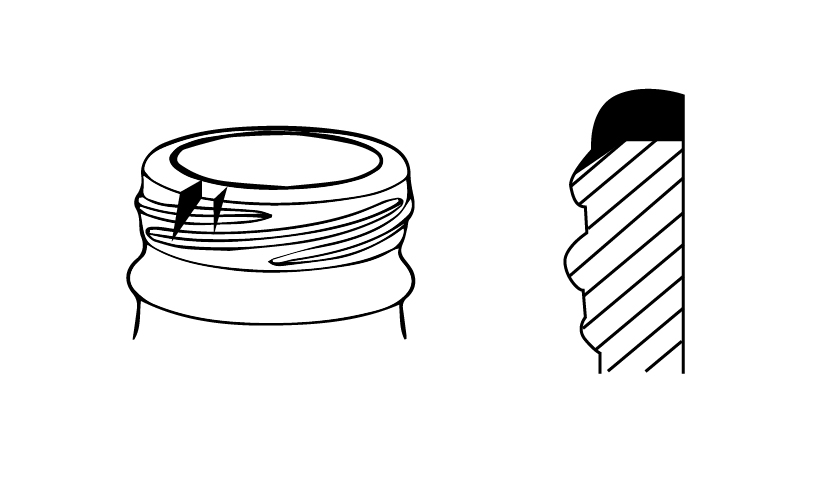
A split occurring between the threads of a screw finish.
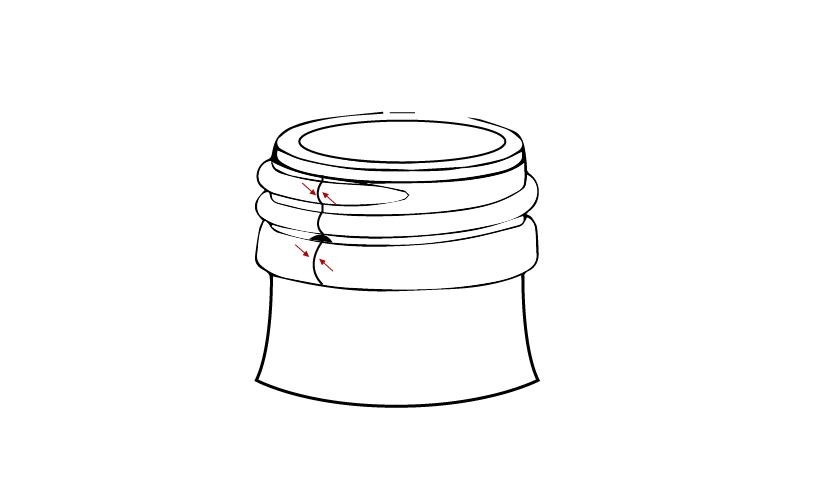
A crack (check) under the neck ring near the mould joint.
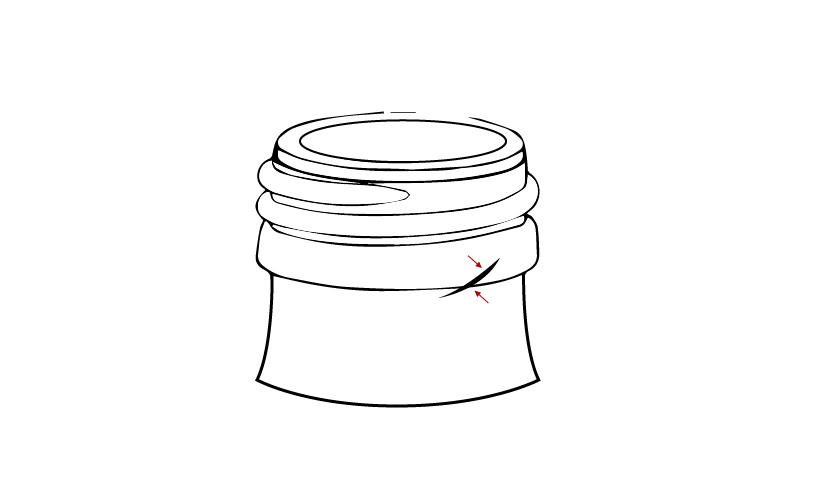
A blister on the outside surface of the glass that can be easily broken.
